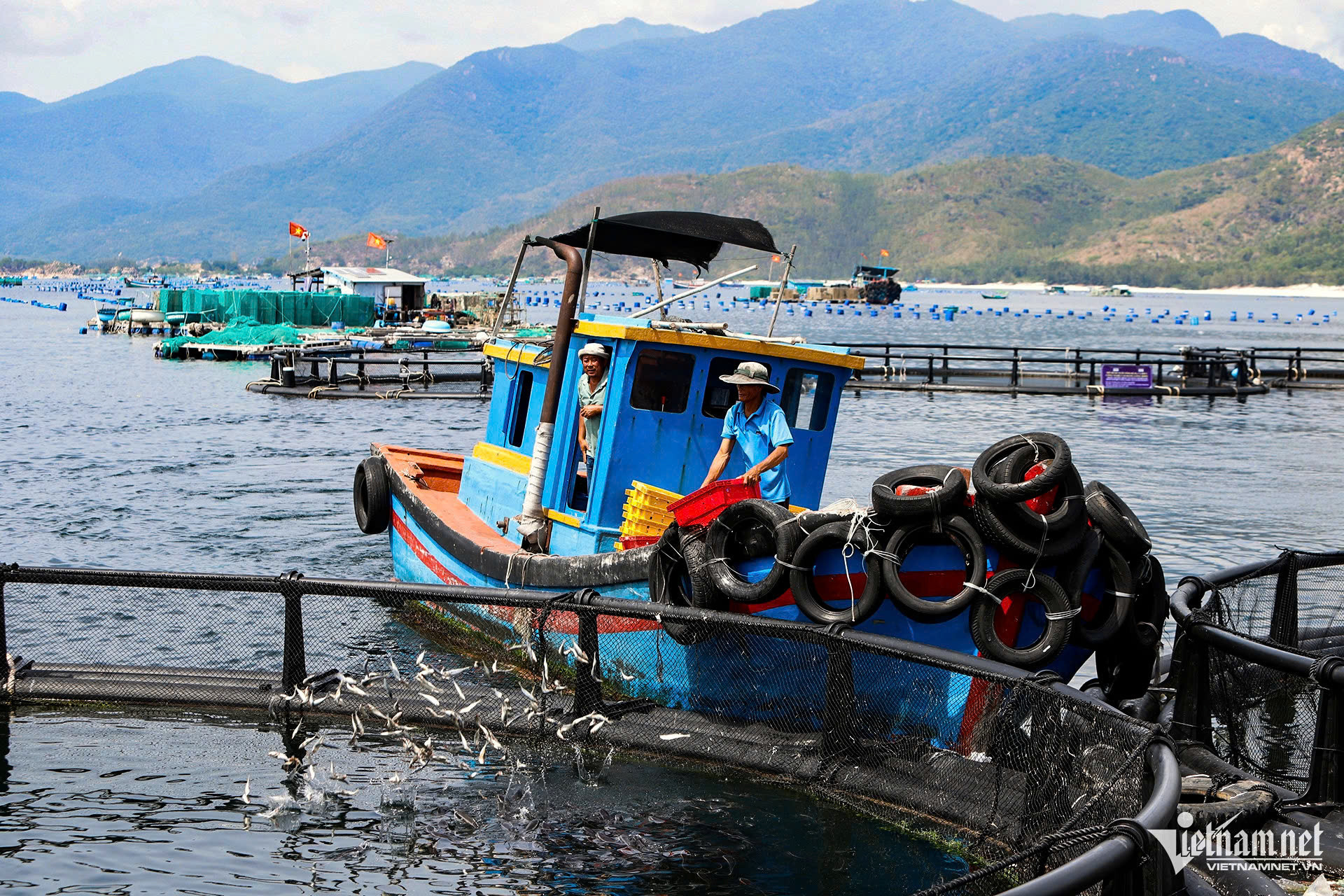
Under Resolution 60 of the 13th Central Committee’s Conference, Ninh Thuan and Khanh Hoa will merge into a new Khanh Hoa province. The administrative and political center will be located in Nha Trang City.
The new province will span over 8,555 square kilometers, with a population exceeding 2.2 million, comprising 64 commune-level administrative units and the Truong Sa Island District special zone.
Nguyen Tan Tuan, Chair of Khanh Hoa’s People’s Committee, said the merger is part of a long-term strategy to maximize strengths with the aim to form a national hub for marine economy, energy, and tourism.
Clean energy
Khanh Hoa leads the country in high-tech aquaculture, with its strategic bays of Van Phong, Nha Trang, and Cam Ranh, with the target of $1 billion value from the marine economy by 2025. It also boasts high-quality agricultural zones exporting mangoes, jackfruit, and durian.
Ninh Thuan excels in renewable energy, with its arid climate ideal for green agriculture, such as grapes, apples, and asparagus, and hosts large-scale wind and solar power plants.
“With the foundation, the new Khanh Hoa is expected to become a national energy hub, marine economy center, and world-class tourism destination, which are the three development pillars,” he said. “Double-digit economic growth is absolutely attainable.”
He stressed that the new province will need support from the central government for robust policies. The government and National Assembly should adjust criteria for centrally governed cities to suit the new model.
He also proposed strategic inter-regional infrastructure and port projects, alongside policies to stimulate consumption and prioritize investments in Central Highlands agriculture and island tourism.
Particularly, the new Khanh Hoa is expected to become a “clean energy hub” of the country, thus significantly contributing to emission reduction, green development, and a sustainable economy in the future.
As of late 2024, Ninh Thuan had 11 wind power plants with total capacity of 667 MW in commercial operation and 37 approved solar projects with total capacity of 2,576 MW, including 34 projects generating 2,376 MW. It’s the only province with five planned offshore wind zones, with potential capacity exceeding 5,000 MW.
Ninh Thuan’s renewable energy capacity is projected to reach 26,500 MW by 2030, contributing 16 percent to the province’s GRDP, solidifying its role as Vietnam’s “clean energy hub”.
Khanh Hoa has nine renewable energy projects with total capacity of 580.6 MWp in operation. At the working sessions with the former Ministry of Industry and Trade, the province proposed adding 13 energy projects to the revised eighth national power development plan (Plan 8).
The 13 projects include onshore and nearshore wind, LNG gas, waste-to-energy, and pumped-storage hydropower.
Two flagship projects are top priority – Van Phong 2 LNG Power Plant, invested in by Japan’s Sumitomo, to establish a liquefied gas and energy export hub, and Khanh Vinh Pumped-Storage Hydropower Plant (Bitexco), envisioned as a strategic “energy storage battery” for regional renewable energy transmission.
Centrally governed city status
Khanh Hoa and Ninh Thuan leaders have recently met in Nha Trang to finalize key issues of the merger proposal. The Standing Committees of both provinces reached consensus on reorganizing provincial and commune-level administrative units and designing a streamlined, effective governance model.
Critical issues such as office and public housing arrangements, inter-provincial transport connectivity, and post-merger economic-social development targets were discussed.
The new Khanh Hoa has identified three strategic pillars by 2030: high-tech industries, world-class coastal tourism, and sustainable renewable energy, which are not only local advantages but also global trends.
At the meeting, Khanh Hoa Party Secretary Nghiem Xuan Thanh stressed the core need for a clear development strategy after the merger.
The three strategic breakthroughs include focusing resources on high-tech industries, high-quality coastal tourism, and a clean energy hub. These pillars leverage existing strengths and align with national economic restructuring trends.
The 2025-2030 development draft outlines that Khanh Hoa must become a new national growth pole, achieving centrally governed city status by 2030, with sustained double-digit economic growth, reflecting a resolute push for breakthroughs.
Nguyen Le